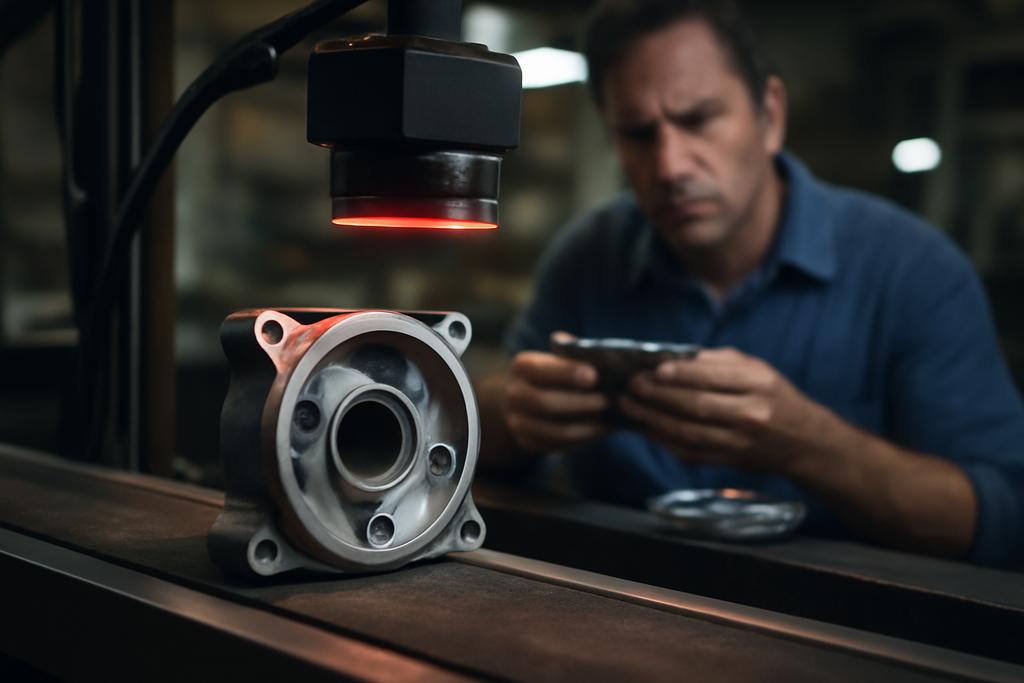Rethinking Anomaly Detection Beyond the Usual Assumptions
In the world of industrial manufacturing, spotting a defective product early can save millions in recalls, protect consumers, and reduce waste. Traditionally, this task has fallen to human inspectors, whose eyes and judgment are prone to fatigue and inconsistency. Enter machine learning: a promising alternative that can scan thousands of items with unblinking precision. But there’s a catch — most AI systems designed for anomaly detection rely on a neat assumption: that the training data they learn from is perfectly clean, containing only normal, defect-free examples.
This assumption, while convenient, is a bit like teaching a child to spot bad apples by only ever showing them perfect ones. It simplifies learning but ignores the messy reality of real-world data, where anomalies sneak in unnoticed. The result? Models that can be easily fooled or that miss subtle defects.
Researchers at the University of Verona, led by Muhammad Aqeel and colleagues, have challenged this status quo. Their new approach, called Confident Meta-Learning (CoMet), embraces the messiness instead of shying away from it. By allowing models to learn from uncurated datasets containing both normal and anomalous samples — without explicit labels — CoMet pushes anomaly detection into truly unsupervised territory.
Why Does It Matter That Data Isn’t Perfect?
Imagine you’re trying to learn what a cat looks like, but your photo album accidentally includes some dogs labeled as cats. If you blindly trust every photo, your mental model of a cat will be fuzzy and unreliable. Similarly, anomaly detection models trained on datasets with hidden defects can mistake anomalies for normal patterns, leading to missed detections.
Most current “unsupervised” anomaly detection methods are actually semi-supervised. They assume all training data is normal and require painstaking manual filtering to remove anomalies. This process is slow, error-prone, and introduces human bias. CoMet sidesteps this by teaching models to know when to doubt their training samples.
How Does CoMet Teach Machines to Doubt?
At the heart of CoMet are two clever ideas: Soft Confident Learning and Meta-Learning. Soft Confident Learning assigns a confidence score to each training sample based on how typical or ambiguous it appears to the model at each training step. Samples that look suspiciously close to the boundary between normal and anomalous get lower weights, so they influence the model less. It’s like telling the model, “Hey, this example might be tricky, so don’t trust it too much.”
But simply down-weighting uncertain samples can make training unstable or cause the model to overfit. That’s where Meta-Learning steps in. This technique, often described as “learning to learn,” helps the model figure out which updates to its parameters actually improve generalization rather than just fitting quirks in the training data. By splitting the data into multiple tasks and validating on held-out subsets, CoMet regularizes learning to avoid overconfidence in noisy or ambiguous samples.
From Theory to Practice: Testing CoMet on Real Industrial Data
The team tested CoMet on three challenging public datasets that simulate real-world industrial inspection scenarios: MVTec-AD, VIADUCT, and KSDD2. These datasets include thousands of high-resolution images of objects and textures with various defect types, some subtle and hard to spot.
CoMet was paired with two state-of-the-art anomaly detection models — DifferNet, which uses normalizing flows to model data distributions, and SimpleNet, a lightweight feature-based method. Across the board, CoMet improved the models’ ability to detect anomalies, often setting new state-of-the-art performance records.
For example, on the MVTec-AD dataset, CoMet boosted recall — the ability to catch true defects — significantly, while only slightly increasing false alarms. This trade-off is crucial in industrial settings where missing a defect can be far costlier than flagging a few extra normal items for review.
Why This Feels Like a Paradigm Shift
CoMet’s approach is a bit like teaching a detective not only to recognize clues but also to weigh their reliability dynamically. Instead of assuming all evidence is equally trustworthy, the model learns to be skeptical when data is ambiguous or noisy. This subtle but powerful shift allows anomaly detection systems to be trained on raw, unfiltered data — a huge win for scalability and real-world deployment.
Moreover, by integrating meta-learning, CoMet equips models with a kind of self-awareness about their learning process, helping them avoid overfitting and adapt better to new or shifting data distributions. This adaptability is essential in industrial environments where products, materials, or imaging conditions can change over time.
Looking Ahead: Smarter, More Trustworthy AI Inspectors
The work from the University of Verona team opens exciting avenues for deploying anomaly detection in complex, dynamic settings without the bottleneck of manual data curation. As industries push for higher automation and quality assurance, methods like CoMet could become the backbone of smarter, more reliable AI inspectors.
Beyond manufacturing, the principles of confident meta-learning could inspire advances in other fields where anomalies matter — from medical imaging to cybersecurity — wherever machines must learn to trust their data but also know when to question it.
In a world drowning in data, teaching AI to doubt might just be the smartest move yet.










